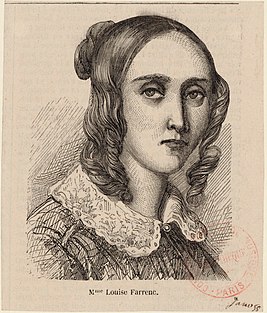
Ludwig van Beethoven's Opus 1 is a set of three piano trios, first performed in 1795 in the house of Prince Lichnowsky, to whom they are dedicated. The trios were published in 1795.

In classical music, a piano quintet is a work of chamber music written for piano and four other instruments, most commonly a string quartet. The term also refers to the group of musicians that plays a piano quintet. The genre particularly flourished during the nineteenth century.

Carl Wilhelm Eugen Stenhammar was a Swedish composer, conductor and pianist.
The Piano Quintet in F minor, Op. 34, by Johannes Brahms was completed during the summer of 1864 and published in 1865. It was dedicated to Her Royal Highness Princess Anna of Hesse. Like most piano quintets composed after Robert Schumann's Piano Quintet (1842), it is written for piano and string quartet.

JohannBaptist Cramer was an English pianist and composer of German origin. He was the son of Wilhelm Cramer, a famous London violinist and conductor, one of a numerous family who were identified with the progress of music during the 18th and 19th centuries.
The Piano Sonata No. 18 in E♭ major, Op. 31, No. 3, is a sonata for solo piano by Ludwig van Beethoven, the third and last of his Op. 31 piano sonatas. The work dates from 1802. The sonata was given the nickname The Hunt by a third party due to one of its themes being reminiscent of a horn call. A playful jocularity is maintained throughout the piece. However, as with many of Beethoven's early works, the 'jocular' style can be heard as a facade, concealing profound ideas and depths of emotion.
Hyacinthe Jadin was a French composer who came from a musical family. His uncle Georges Jadin was a composer in Versailles and Paris, along with his father Jean Jadin, who had played bassoon for the French Royal Orchestra. He was one of five musical brothers, the best known of whom was Louis-Emmanuel Jadin.
Sergei Prokofiev's Piano Sonata No. 6 in A major, Op. 82 (1940) is a sonata for solo piano, the first of the Three War Sonatas. The sonata was first performed on 8 April 1940 in Moscow.
Piano Sonata No. 2, Op. 36, is a piano sonata in B-flat minor composed by Sergei Rachmaninoff in 1913. Rachmaninoff revised it in 1931, with the note, "The new version, revised and reduced by author."
The Violin Sonata in F minor, Op. 4, for violin and piano was composed by Felix Mendelssohn in 1825 and is the only one to carry an opus number. Mendelssohn composed two other violin sonatas, both in F major, that were not published in his lifetime. This was published with a dedication to his friend and violin teacher, Eduard Rietz, who was also dedicatee of the composers Octet in E-flat major, Op. 20.

The Cello Sonata No. 2 in F major, Op. 99, was written by Johannes Brahms in 1886, more than twenty years after completing his Sonata No. 1. It was first published in 1887. It was written for, dedicated to and first performed by Robert Hausmann, who had popularised the First Sonata, and who would the following year be given the honour of premiering the Double Concerto in A minor with Joseph Joachim.
The Serenade No. 12 for Winds in C minor K. 388/384a, was written by Wolfgang Amadeus Mozart in 1782 or 1783. The work is sometimes called "Nacht Musique". In 1787, Mozart transcribed the work for string quintet. This transcription survives as String Quintet, K. 406/516b.
The Piano Sonata in C-sharp minor, Op. posth. 80, was written by Russian composer Pyotr Ilyich Tchaikovsky in 1865, his last year as a student at the St Petersburg Conservatory. The sonata in its original form was not published in Tchaikovsky's lifetime; it was published in 1900 by P. Jurgenson, and given the posthumous opus number 80.

The Piano Quartet No. 2 in A major, Op. 26, by Johannes Brahms is scored for piano, violin, viola and cello. It was completed in 1861 and received its premiere in November 1863 by the Hellmesberger Quartet with the composer playing the piano part. It has been especially noted for drawing influence from composer Franz Schubert. Lasting approximately 50 minutes, this quartet is the longest of Brahms's chamber works to perform.
Felix Draeseke's Quintet for Piano, Strings and Horn in B-flat major, Op. 48, was composed in 1888 and published a year later by Kistner of Leipzig. It was dedicated to Adolph Stern.
Sonatas, duos and fantasies by Franz Schubert include all works for solo piano by Franz Schubert, except separate dances. They also include a number of works for two players: piano four hands, or piano and a string instrument.
The Piano Quintet No. 1 in A minor, Op. 30, was composed by the French composer Louise Farrenc in 1839.
The Horn Sonata in E-flat major, Op. 28 is a composition by Franz Danzi published by Breitkopf & Härtel in 1804.

The Piano Quartets, WoO 36, by Ludwig van Beethoven are a set of three piano quartets, completed in 1785 when the composer was aged 15. They are scored for piano, violin, viola and cello. He composed a quartet in C major, another in E-flat major, and a third in D major. They were first published posthumously in 1828, however numbered in a different order: Piano Quartet No. 1 in E-flat major, Piano Quartet No. 2 in D major, and Piano Quartet No. 3 in C major.











